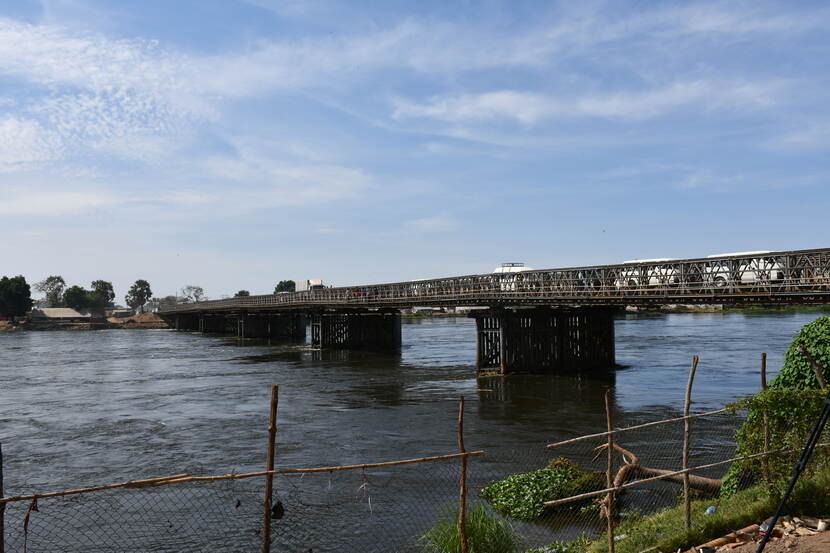The Netherlands and South Sudan: development cooperation under challenging circumstances
Weblogs
Pascalle Grotenhuis, Director-General for International Cooperation (DGIS) at the Ministry of Foreign Affairs, paid a visit to South Sudan from 13 to 15 March to celebrate the ties between both countries. Her account of an impressive visit to the youngest country in the world can be read below.
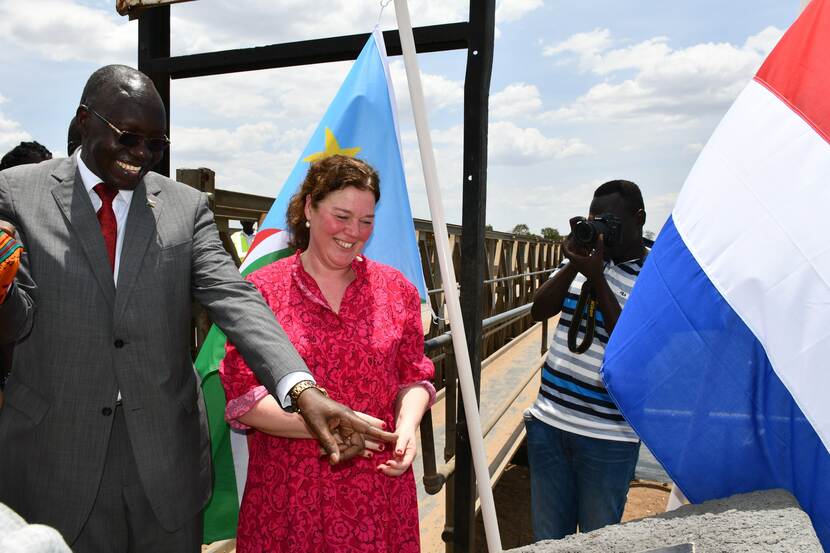
South Sudan, a landlocked country of around 12 million inhabitants that lies between Sudan to the north, Ethiopia to the east, Uganda, the Democratic Republic of the Congo and Kenya to the south, and the Central African Republic to the West, gained its independence in 2011 after long periods of conflict. The Netherlands was one of the first countries to recognise it as an independent nation. Thirteen years later, the country stands at an important crossroads. The peace agreement whereby South Sudan ended a civil war in 2018 will expire within a year. It is expected that the young country will hold its first elections at the end of this year. However, the many conflicts and civil wars of the past mean that it remains vulnerable and dependent on humanitarian aid.
Pascalle’s visit to South Sudan coincided with the 50th anniversary of the Juba Nile Bridge. The construction of the bridge was commissioned by the United Nations to ensure that refugees could cross the Nile and thus travel safely from the north to the south of the country, which at the time was still part of Sudan. Moreover, the bridge strengthened Juba’s position as the hub of trade between Uganda and Sudan.
Day 1: Better opportunities for young people
‘The Netherlands supports South Sudan through various forms of development cooperation,’ Pascalle explains. As DGIS at the Ministry of Foreign Affairs she is responsible for all policy relating to development cooperation. She gives an example: ‘South Sudan has a young population. Over 70% of its inhabitants are under 30. But the majority of that group have never been able to complete a formal education. The Netherlands is working to help provide vocational education, to enhance the position of these young people on the labour market.’
While she was in South Sudan, Pascalle visited a Multiservice Training Centre (MTC) in the capital Juba, where the Netherlands provides financial support for the Youth Employment and Empowerment Project (YEEP) of the UNDP – the United Nations Development Programme. ‘Through YEEP, the MTC has already been able to provide practical training for over 3,300 young people, over half of whom are women,’ Pascalle explains enthusiastically. ‘To this day, most of this group is still in work or has an income!’
Thanks to its success, YEEP has been followed up by a new programme: ‘Skills, Employment and Empowerment for the Development of Youth Project’ (SEED4youth), almost fully financed by the Netherlands, which aims to equip 20,000 more young people with skills, 2,200 of whom at the MTC in Juba.
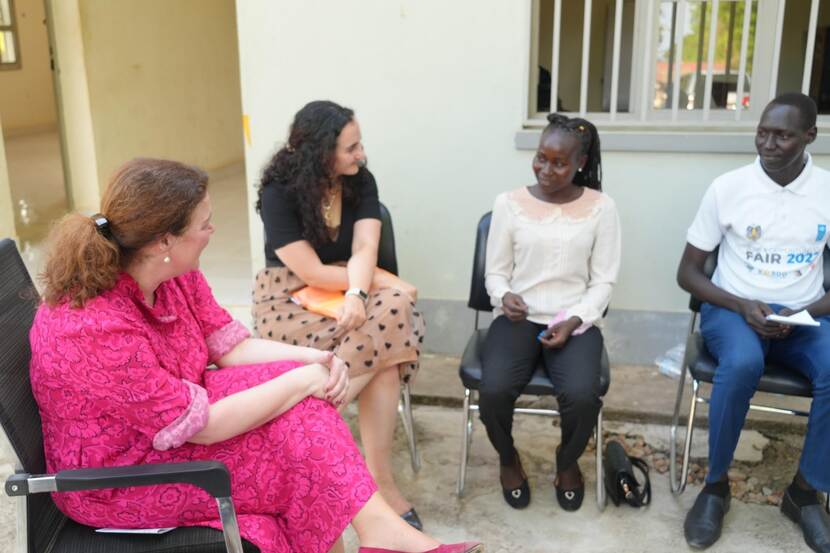
Day 2: Quest for sustainable peace
After multiple civil wars, many of the population are still internally displaced. Many thousands live in the Protection of Civilians (PoC) camp in the city of Malakal.
Pascalle visited the site. ‘The impact of the civil wars is felt greatly here. Here, people have sought refuge in a PoC camp where they are protected from ethnic violence by a UN mission. At present, around 41,000 people live there. Some have already been there for more than a decade,’ Pascalle says. The Netherlands is working to improve the situation of these people through conflict mediation in the region. ‘In Malakal, for instance, we are funding a project in which three different tribes are represented, with the aim of increasing mutual trust between the different groups.’
The ongoing war in Sudan, the country’s northern neighbour, is also creating challenges according to Pascalle. ‘Since the beginning of the war there, in April 2023, over 600,000 people have already fled across the border into South Sudan. A large part of that group has also ended up in in Malakal. UNHCR and IOM have joined with the local authorities to set up a transit camp. The Netherlands seeks to support this initiative. As the biggest donor to the South Sudan Humanitarian Fund we help humanitarian partners in the reception of these refugees and transport to their next destination.’
Pascalle visits a Protection of Civilians (PoC) camp in Malakal.
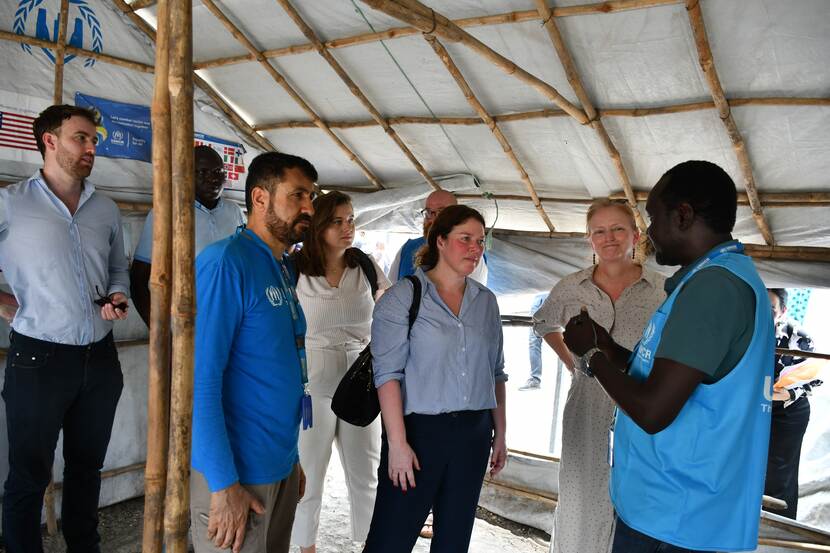
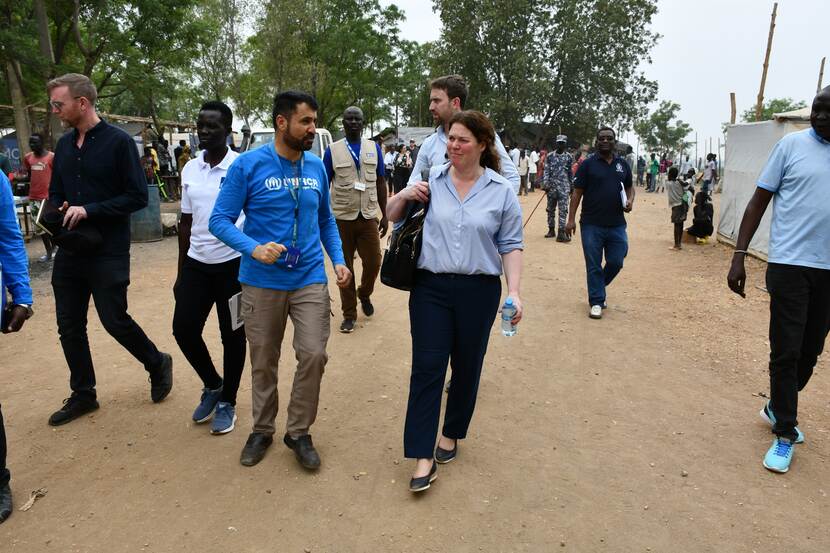
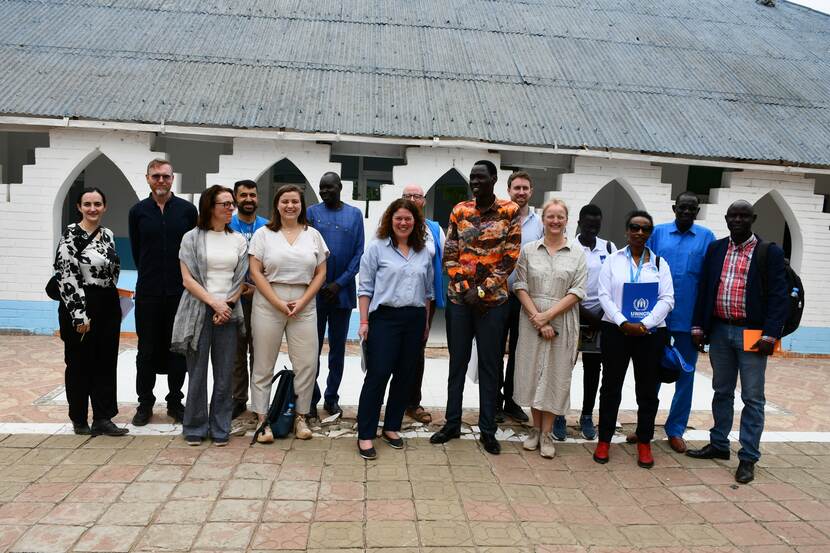
Day 3: Celebrating the 50th anniversary of Juba Nile Bridge
On the last day of her visit, Pascalle and the South Sudanese Minister of Roads and Bridges, Simon Majok Majak, jointly unveiled a plaque commemorating the 50th anniversary of the Juba Nile Bridge. Pascalle: ‘The project was carried out back when Jan Pronk was Minister for Development Cooperation. The bridge was largely funded by the Netherlands and built by the Dutch firm De Groot International. During my visit, I found that the construction of the bridge was something many South Sudanese remembered clearly. It still plays an important role in the daily lives of Juba’s inhabitants today, and is a well-known landmark. As such, this bridge is a good example of a development project that continues to have a positive impact decades after its initiation.’
‘The bridge was a symbol of peace’ and ‘the warring parties in South Sudan all viewed it as their bridge,’ Jan Pronk stated in a video message. As a result, the bridge was spared and, fifty years on, continues to provides an important connection across the Nile and between the country’s various communities.
Pascalle also sees the bridge as having symbolic value on this visit. ‘Through the theme Building Bridges I have tried to stress the importance of building bridges between ethnic groups, men and women, and young and old. Because by doing so, its people will create a South Sudan where everyone helps to build a better future.’
